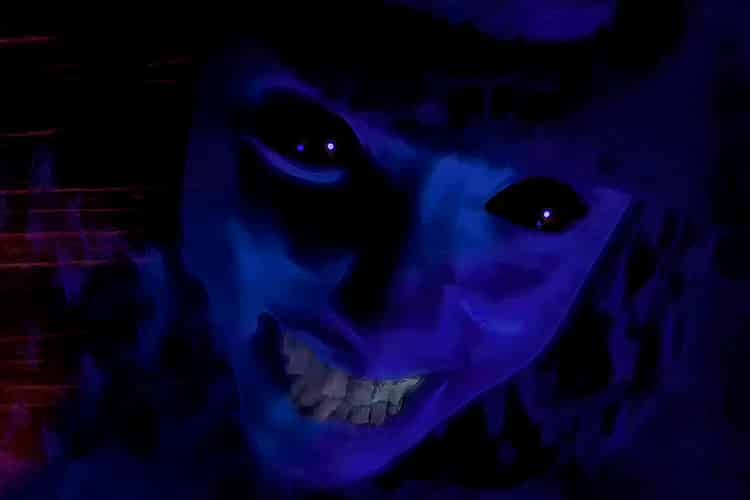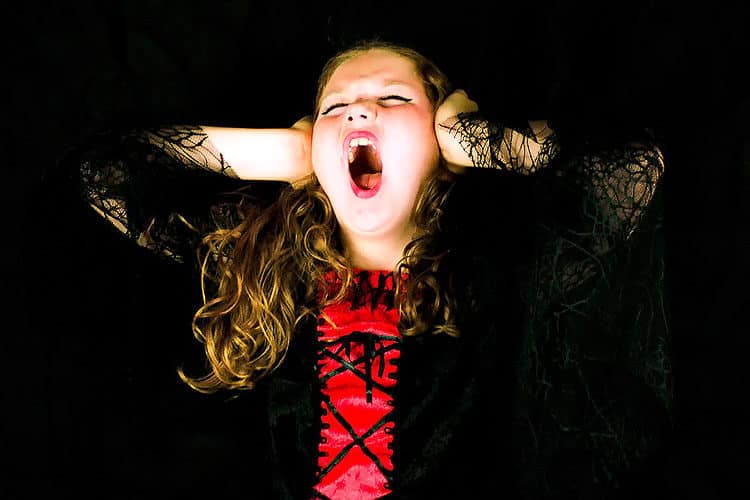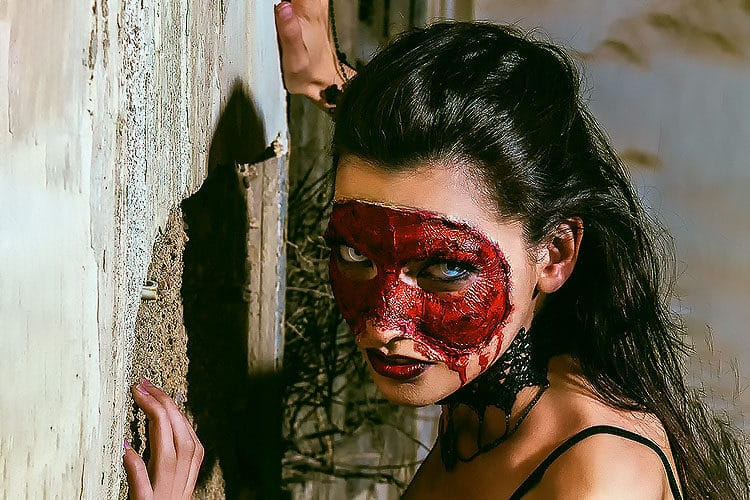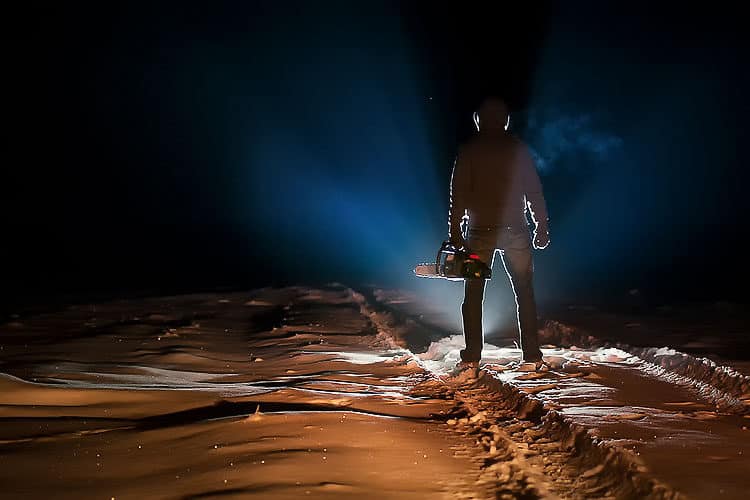Making an emotional connection through fear is the key to creating a powerful and memorable experience for guests.
By Phil Raybourn
For haunted attractions, emotions, especially fear, create a profound connection with our guests. We will talk about fear and how attractions can go beyond the usual maze and scare areas to create a heightened reality for their guests in the form of a brilliant experience.
When we experience fear, it’s visceral and transformative. There are many types of fear that haunted attractions have exploited for decades, beginning with fear of the dark and the unknown and including fears of heights, falling, tight spaces, snakes, and clowns. Every kind of fear plays upon the flight-or-fight tendency that we all have. When used effectively, fear creates not only overwhelming terror in the moment but an experience that guests won’t ever forget, because emotions create memories.
Key takeaways:
Help people experience their fears—safely.
- Establish your story and market the fear before you build your haunt.
- Find unique ways to play with fear.
- Use control to build fear.
- Play to your strengths.
- Make the fear follow your guests home.
Watch this Session
The video recording of this session is available free on HAuNT Connect.

People Want to Feel Fear—
According to the 2019 Immersive Design Industry Annual Report, fear-based attractions grew 7% in 2019. People are feeling more fearful because of the coronavirus pandemic and, because of that, people are likely to want to both have the choice to confront their fear and to do that in a safe environment.
Safety and having a choice about participating in a fearful situation are essential in themed attractions. We need to provide an environment where guests can be scared—and know they’ll be scared safely—while knowing that it’s all make-believe.
Not every guest wants to journey down the rabbit hole into those dark and macabre wonderlands we all love to create—but more and more guests want that. The experience of fear is becoming one of the most sought-after reasons that people attend an attraction. People want the opportunity to play with the emotion of being afraid.
It’s not only what guests see, but it’s also what they don’t see that can be terrifying. The lingering memory of what they don’t see, but sense, is the horror that follows them home and creates an experience that stays with them long after they’ve left your attraction. The goal is to create such a moment in your story for every guest that walks through your haunt.

Fear Starts with Your Story
We base escape room experiences on participatory stories that have the premise of the guest being trapped inside a room and having to find their way out. We design these attractions as frustrating and difficult, and timers with countdown clocks help facilitate the dread of not succeeding or being trapped inside. This is a fear-based experience that’s tied to detailed, hands-on adventure, and it’s all based on a story designed to create unforgettable experiences.
It’s crucial to establish your story and market the fear long before you craft your haunt or event to make guests aware of the story before they arrive on site. The story should start on your website and on social media months or at least weeks before your event opens, to create enthusiasm so guests feel this is something they shouldn’t miss. It continues when guests drive onto your property, and queue lines are key to bringing even more dimension to the story.
If your haunt has the same basic story from year to year, think about how you can layer that story to make it fresh each season. If you do this, it creates a sense of adventure each time guests go through, not unlike each time we play a video game. Every time a guest comes back, the experience has something new, and the story gets deeper. In this way, you’re creating not only a tradition for people to come to your haunt every year, but you’re also creating fans of your story. So, layering is a powerful tool for refreshing your event each year.

Fairytales Can Be a Great Source of Fear
Fairytales provide a superb source from which to build a fear-based attraction. Fairytales that have been modernized or revamped for a fearful environment work well. I was asked what one of the most difficult genres to achieve in a haunt was. Werewolves are often problematic because it’s challenging to make them believable. They always somehow look a little fake, and people have their interpretations of how a werewolf should look. So, it is difficult. Not impossible, but difficult. That being said, I love werewolves. The bottom line is if people don’t buy the reality you are trying to create, it breaks them out of the story.
What else breaks people out of a story? The first thing that comes to mind are bad props and bad actors—especially those actors I call lurkers. These are the actors who feel that being intimidating is the scariest thing they can do, so they stand right in front of the guest’s face. To me, that’s not scaring. It’s just annoying, and it always takes me out of the immediate interaction with the story.
Actors want to create and take ownership of their character—which we want to encourage—but they must stay within the character and the storyline guidelines that you as creators provide for them. It’s the director’s job to go through the attraction when guests are there to make sure none of the actors are creating a mini-realm of their own in one room.

Find Unique Ways to Play with Fear
Playing with fear refers to using fear in your attraction to craft your experience. One of the best ways to play with fear is to get into your guests’ minds and make them believe it’s their sixth sense that’s convincing them something’s watching them from the shadows. Playing on the fear of the unknown is powerful, so use it. And it doesn’t cost money, because it’s based on developing a story that ramps up people’s imaginations to an 11!.
Use Control to Build Fear
One of the critical elements of building fear is control. You want to build the anxiety, but you also want to provide moments of relief. It’s all about pacing. You build up the fear, and then you provide a sense of safety. Right when the guest feels the danger is over, you hit them with the next scare. Design your haunt based on that ebb and flow. If you’re hitting your guests all the way through your attraction, they can become numb. If your storyline roller coasters- down, up, down, up- that builds tension and creates a more memorable experience. Pay attention to how you build the arc within your story, and make sure it has moments of what appear to be safety in between the terror. The more that you can use guests’ senses, the more immersive the experience of fear will be. Be it a foul smell or a loud noise or a cool scenic piece that they experience viscerally, those sensory elements create memories.

Play to Your Strengths
In creating storylines for your haunt, see if there’s an urban legend or other historical events that happened in your area that you can use. Maybe you’ve already created an icon character you can build upon or tell a fresh story with year after year. Legends and established characters are strengths you already have, so use them. If you have access to a cornfield, create a corn maze. If your haunt is in an old abandoned house or a warehouse, create a storyline that supports that location. Besides helping to frame your story, having that location fit the story will save you money in the long run.
Research and get to know your demographic. Your audience and its expectations will be different depending on if you’re in the city, the suburbs, or a rural area. Be aware of how your story translates to your demographic.
If you can get to the place where you have intellectual property (IP) as part of your attraction, that will benefit you. However, creating IP in the form of your signature character (s) or theme(s) takes take time. If you have the time to develop this kind of IP, it will serve you well in the long run, because it belongs to you. You can market it and merchandise it.

Make the Fear Follow Your Guests Home
You want to have your guests take something home with them from your experience. There are several ways you can do this. Say your story involves a ghost that leaves scrawled notes all over your haunt. When your guests leave your attraction and return to their vehicles, they find a note on the windshield just like the ones they saw in your house. This is a splendid way to continue the story once guests leave. Or you could have a character right at the exit of your parking lot who flashes in and flashes out in a ghost-like way. That keep guests engaged even as they leave and enhances the entire experience.
There Are No New Fears—Just New Ways to Scare Guests with Them
The more you can play upon the generality of fears and incorporate multiple ones within your haunt, the more guests you will scare. Whatever the theme of your haunt, the key is to hit upon the different emotional, sensory connections to those fears.
About HAuNT Connect
HAuNT Connect is a FREE online community to connect the haunted attractions industry at large. Featuring live education and webinars by industry experts, vendor showrooms with products, virtual meeting opportunities to discuss and source products for your attraction, peer-to-peer networking, idea sharing, and more. Register here.